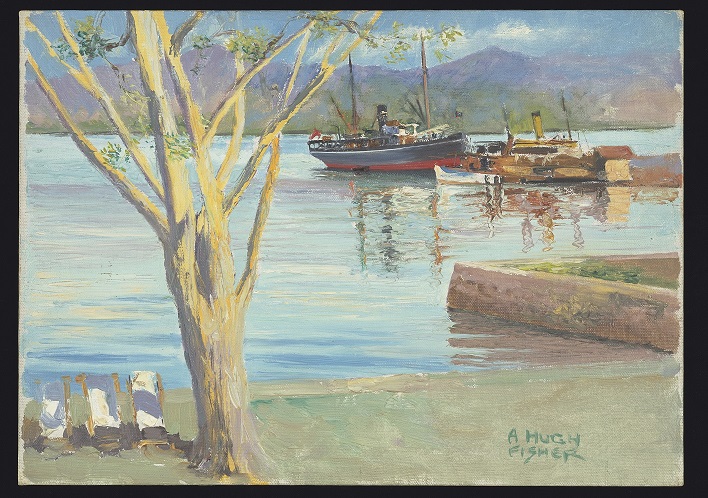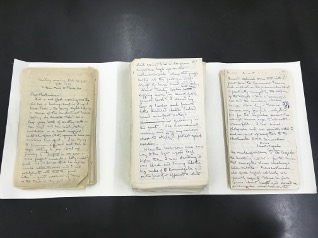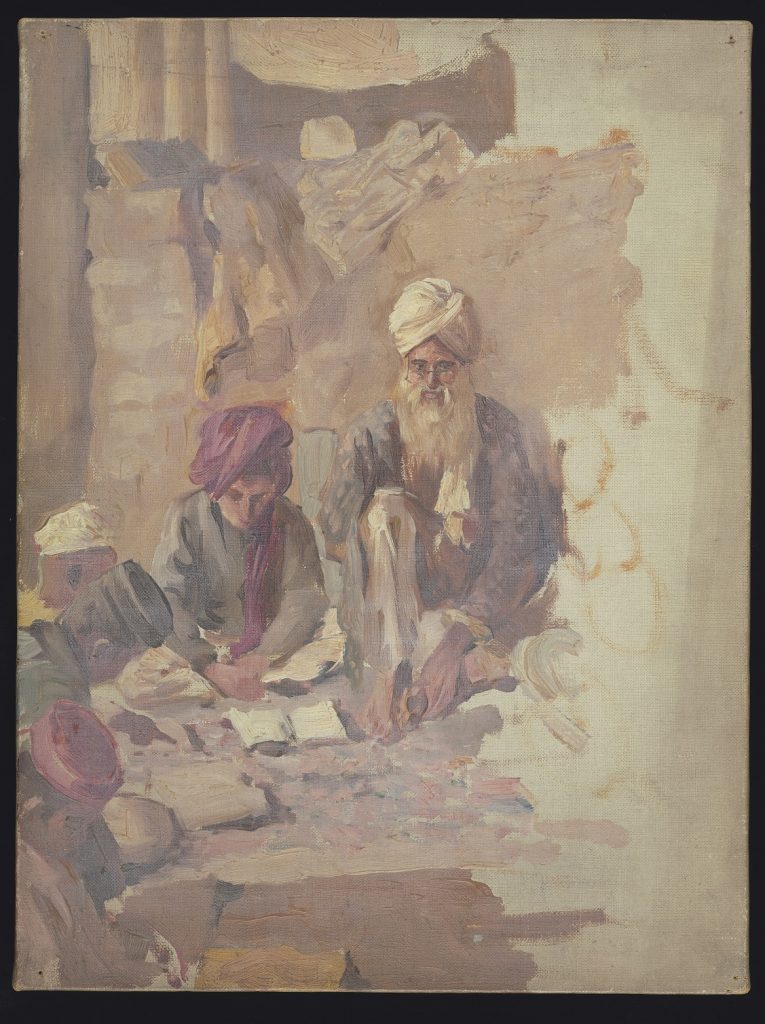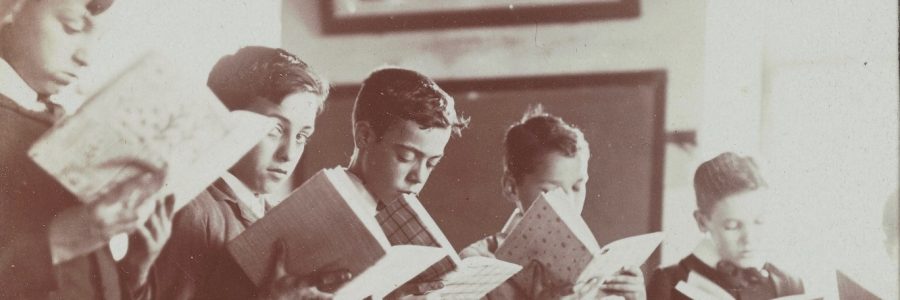
Classroom photographic journeys: the Alfred Hugh Fisher Collection
This guest post is by Dr Sabrina Meneghini, Associate Lecturer in Photographic History & Archival Heritage at Milan’s CFP Bauer. Sabrina recently completed her PhD at DeMontfort University, entitled Classroom Photographic Journeys: Alfred Hugh Fisher and the British Empire’s Development of Colonial-era Visual Education, which made heavy use of the Library’s Royal Commonwealth Society photographic collections. This post shares the contents of an exhibition held earlier this year to mark the end of Sabrina’s research project.
From October 2022 to January 2023 reproductions of photographs and paintings of the British artist Alfred Hugh Fisher (1867-1945) were exhibited at the Alison Richard Building. The Fisher Photograph Collection, which is one of many treasures held in the Royal Commonwealth Society (RCS) Library at Cambridge University Library, was the subject of my PhD research and the focus of my dissertation Classroom Photographic Journeys. Alfred Hugh Fisher and the British Empire’s Development of Colonial-era Visual Education. After four years of research and work within the RCS archive and the Fisher Photograph Collection, together with the former RCS Librarian Rachel Rowe and former Curator Dr John Cardwell, we were able to exhibit Fisher’s work which could finally be viewed and appreciated by a wide audience. The Fisher Photograph Collection had never been exhibited before so its display at the Alison Richard Building provided a unique opportunity to see the artist’s photographs and paintings.
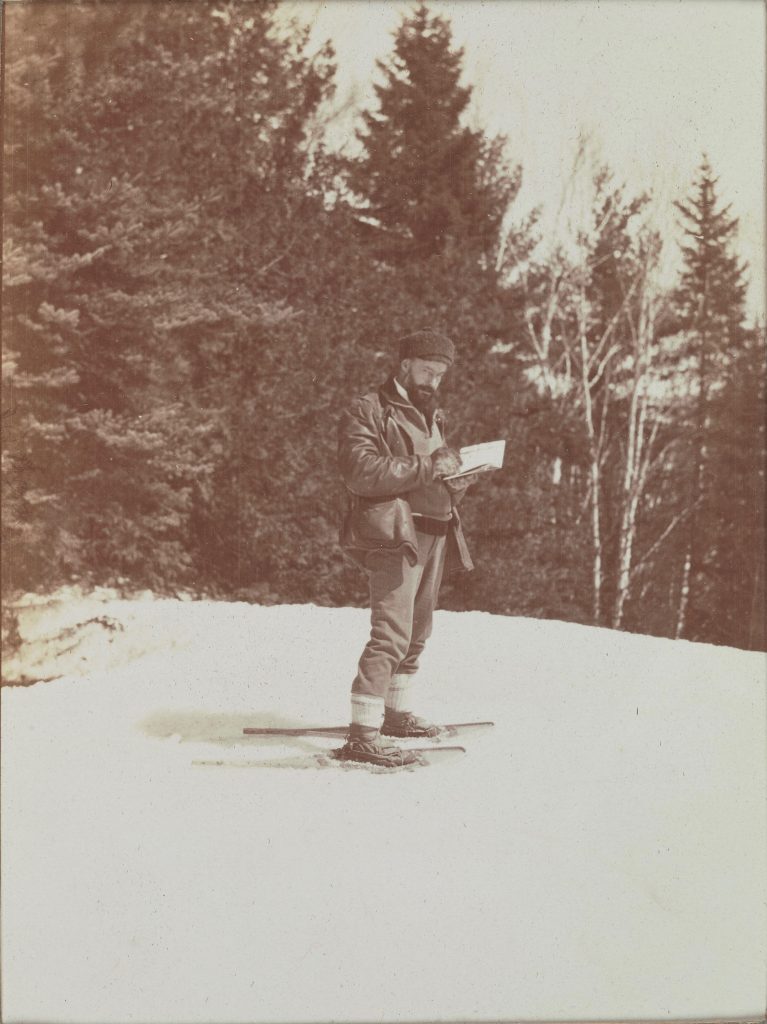
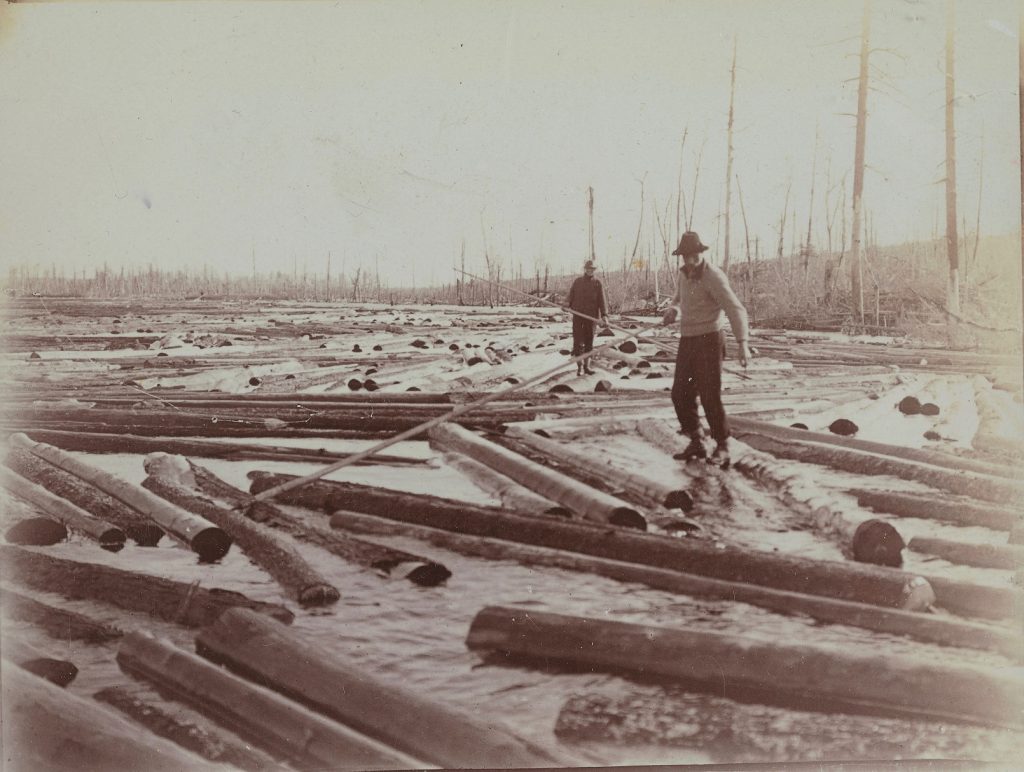
Alfred Hugh Fisher was a British writer, painter, etcher, newspaper illustrator, poet, traveller, and trained photographer. In 1907 he was hired by the Colonial Office Visual Instruction Committee (COVIC) to document photographically the people and landscapes of the British Empire to facilitate school education.
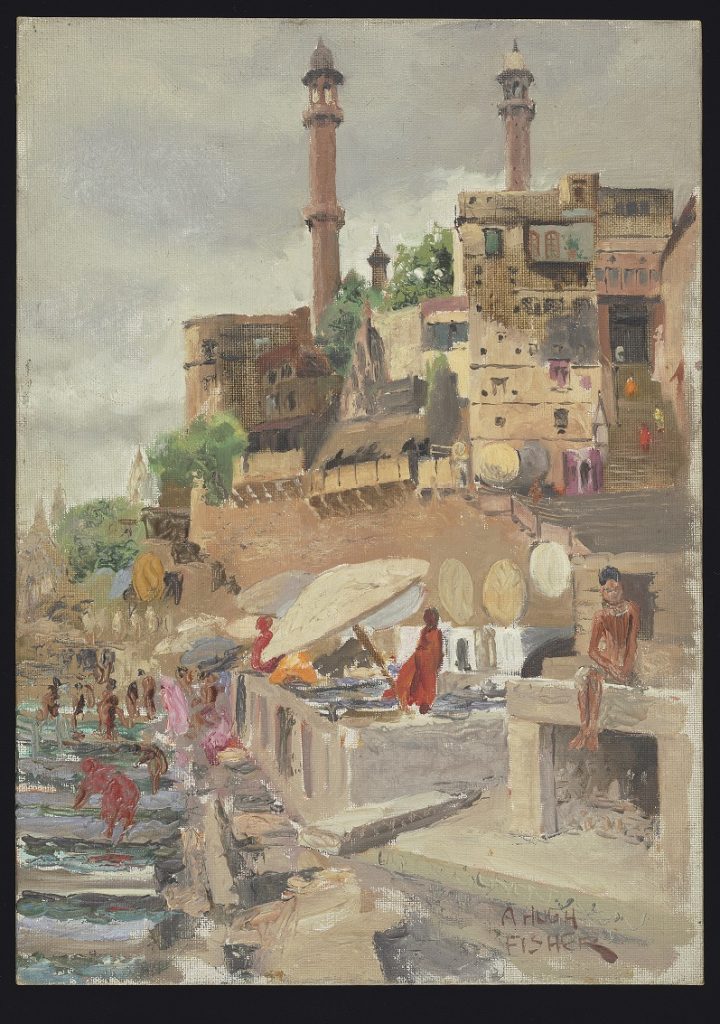
In December 1902 Joseph Chamberlain, Secretary of State, established the Visual Instruction Committee. The aim of COVIC’s scheme was to create a series of lectures accompanied by lantern slides which could be used in geography lessons in schools; the texts along with the images were intended to promote and disseminate imperial consciousness in the classroom. The illustrated lectures were to be used in the United Kingdom, the Colonies and India. The project’s cultural aims were twofold: English schools would receive images of the colonies, while colonial school children would see slides from the ‘Mother Country’.
From October 1907 to August 1910, Alfred Hugh Fisher travelled around the globe visiting British possessions, Dominions and colonies, taking photographs and making paintings from which COVIC produced sets of lantern slides and textbooks. His journey started in October 1907 in South Asia where he visited India (at the time of Fisher’s journey the term India included the areas in the Indian subcontinent administrated by the United Kingdom and ruled by the British Raj. It extended over present-day India, Pakistan, Bangladesh, Myanmar, and Sri Lanka), Burma [present Myanmar], Aden, Somaliland, and Cyprus. From July 1908 to May 1909, he travelled to Canada, Newfoundland, Weihaiwei, Hong Kong, Borneo, the Malay Peninsula and Singapore. In his last journey, from October 1909 to August 1910, he sailed from Gibraltar and Malta to Australia, New Zealand, Tasmania, and Fiji. COVIC purchased images from places he was not able to visit such as the West Indies [Caribbean], and South Africa. Some were acquired from official bodies, others from amateur photographers.
Fisher was the first and only photographer employed by COVIC. At the time of his interview, he was a talented artist and writer, but had received no formal photographic training. COVIC provided this and the project’s supervisor, renowned British geographer Halford John Mackinder, attempted to influence how Fisher’s work would shape COVIC’s with instructions on how and what to photograph. Fisher did not always follow these instructions and his own vision of the Empire can be seen through his artistic works.
The full of the Fisher Photograph Collection comprises the documentation Fisher produced for COVIC, and the visual material the Committee gathered during the years it was active – over 5,000 photographs (the majority taken by Fisher); 150 paintings and 64 notes by Fisher; his diary letters; 37 sheets of watercolours; correspondence between COVIC and members of the British Association; and further written material related to Fisher.
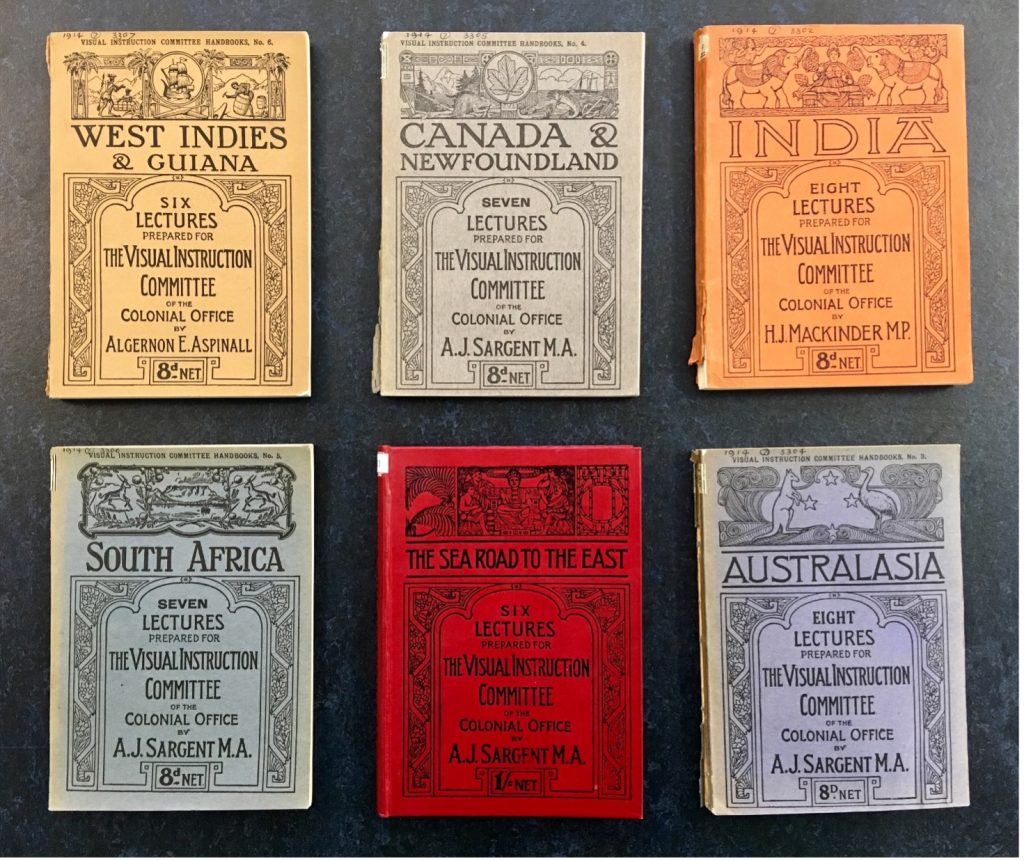
COVIC produced six textbooks on the British Empire for a British audience. Though the Committee’s original plan was to adapt, after their publication, the lectures aimed at the ‘Mother Country’ for the colonies, this never happened, thus the six textbooks published were specifically targeted for the British audience. Four of these six textbooks, India; The Sea Road to the East; Australasia; and Canada and Newfoundland, feature Fisher’s images, whilst two, South Africa and West Indies and Guiana, feature images collected by COVIC from different sources. Their covers include drawings that reinforce stereotypical colonial discourse.
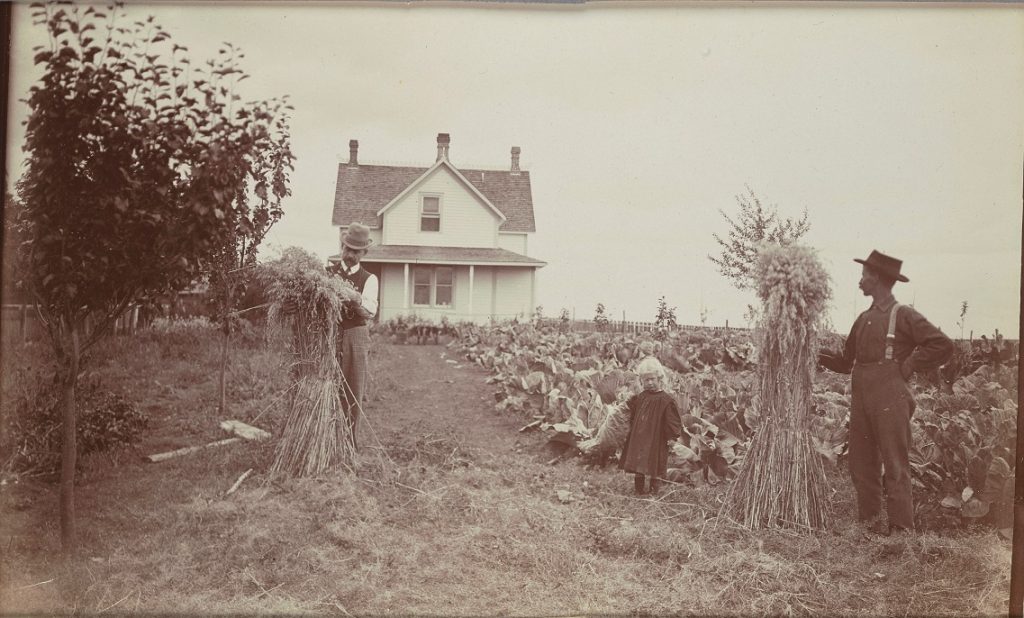
Most of the images taken by Fisher, or collected by COVIC, were intended as lantern slides to accompany lectures, and an average of 350 slides accompanied each textbook. Lantern technology, also called the magic lantern, is an optical device that projects images made on glass. Photographs were directly printed on glass slides that could also be hand coloured. COVIC envisaged teachers reading from the textbooks in darkened classrooms, whilst the images were projected onto a wall.
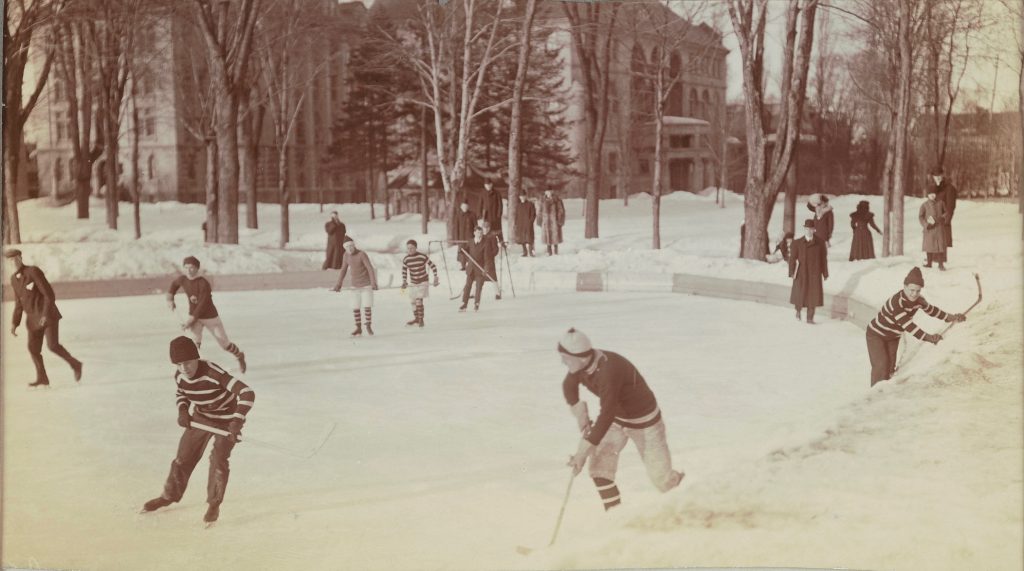
The exhibition was displayed throughout the four floors of the Alison Richard Building, and it was structured following the geographical areas Fisher visited. The ground floor provided introductory images, Fisher’s biography and COVIC’s history. The first floor was dedicated to Australia and Canada with images and textbooks showing how the photographer depicted the settler colonial countries. The images from Canada, Newfoundland, Australia, Tasmania and New Zealand showed the possible opportunities for potential British emigrants by demonstrating settlers and emigrants at work or enjoying their lives. Fisher’s attention is on the human and on their occupation. Paintings and photographs from the Dominions depict farmers, harvest, orchards, miners, settlers, emigrants, to show white people’s good life.
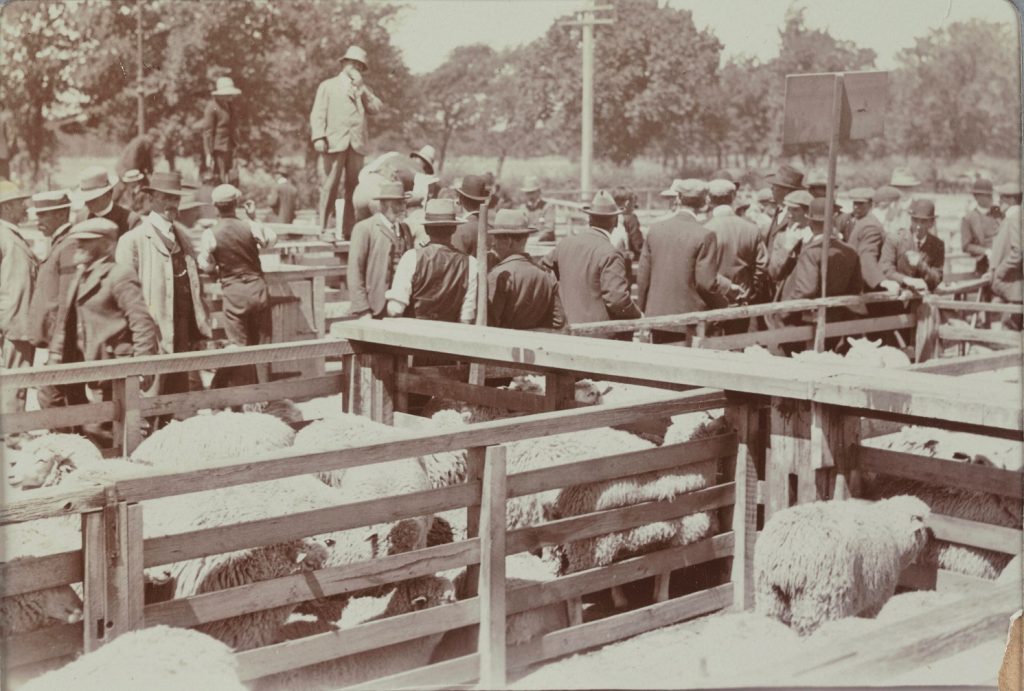
On the second floor the exhibition focused on photographs and textbooks from West Indies, South Africa and the Mediterranean possession. The images from the Caribbean record the importance of the local products such as sugar and fruit for the economy of the islands and to Great Britain. The lectures focused on the prosperity of the places aimed at attracting possible future settlers.
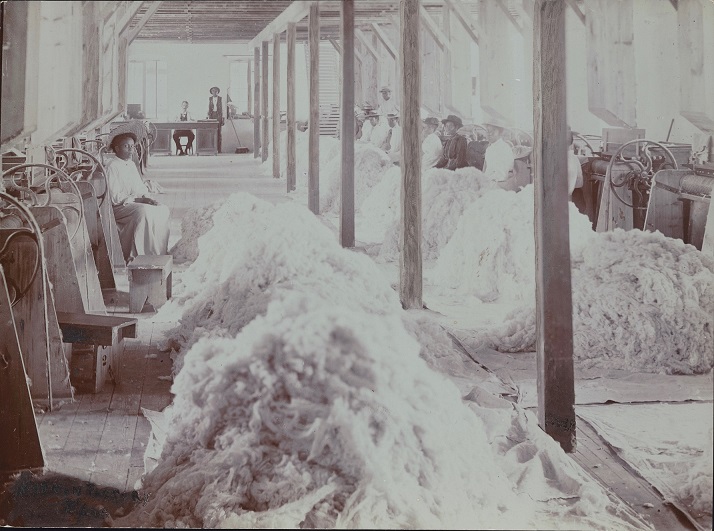
In addition to photographs from Africa, there was a display of watercolours from South Africa. For the South African lectures, Mrs. Gilbert Stephenson, who had lived for several years in Rhodesia, provided COVIC with 35 watercoulors with descriptive material to hand colour the slides and to supply information to the textbook’s author. The sketches follow an identical pattern: in the centre at the top is visible the scene drawn using the same format and measurement intended for the actual slide. Below the sketch there is a description of the view and further instructions for the painting. This information guided the lantern colourist in order to produce accurate representations of the South African’s landscapes, colours and customs.
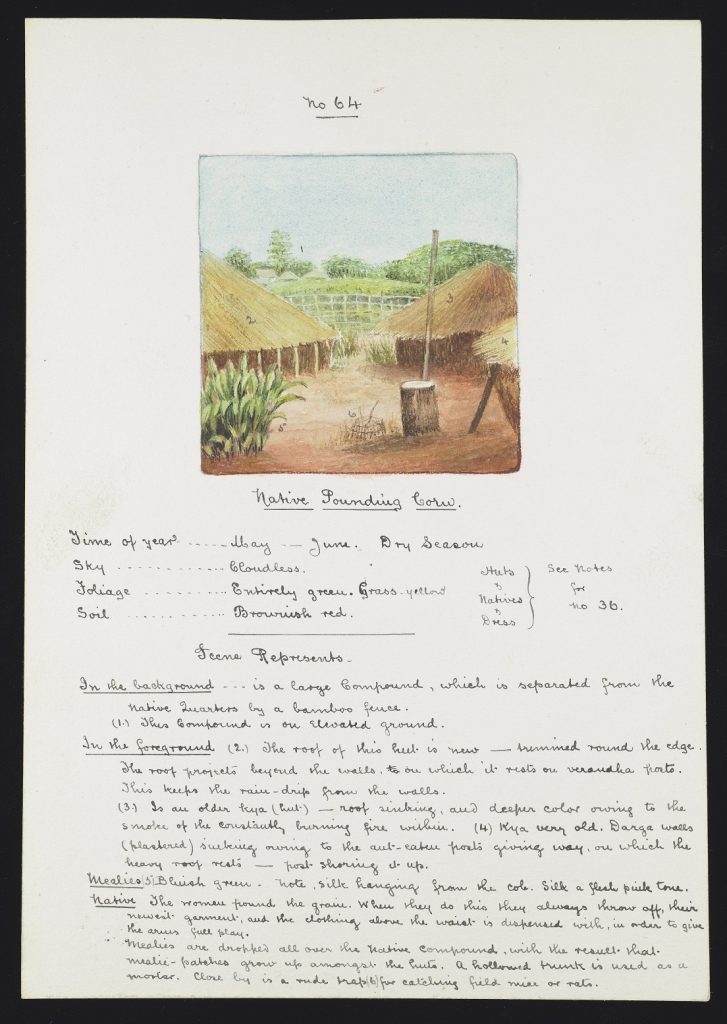
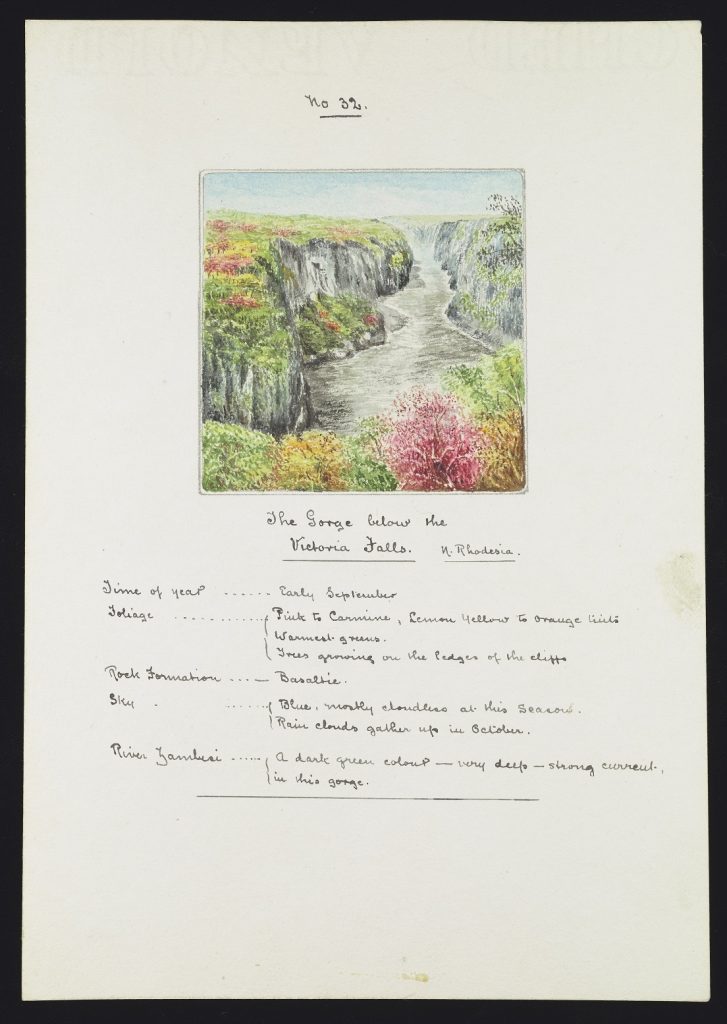
In Gibraltar and Malta Fisher had the opportunity to visit different educational institutions and take photographs of students in their classrooms. The pictures also depict economic activities and everyday lives in the countries. Fisher’s attention for the human figure is visible in the portraits he took that reflect a detailed description of the subjects.
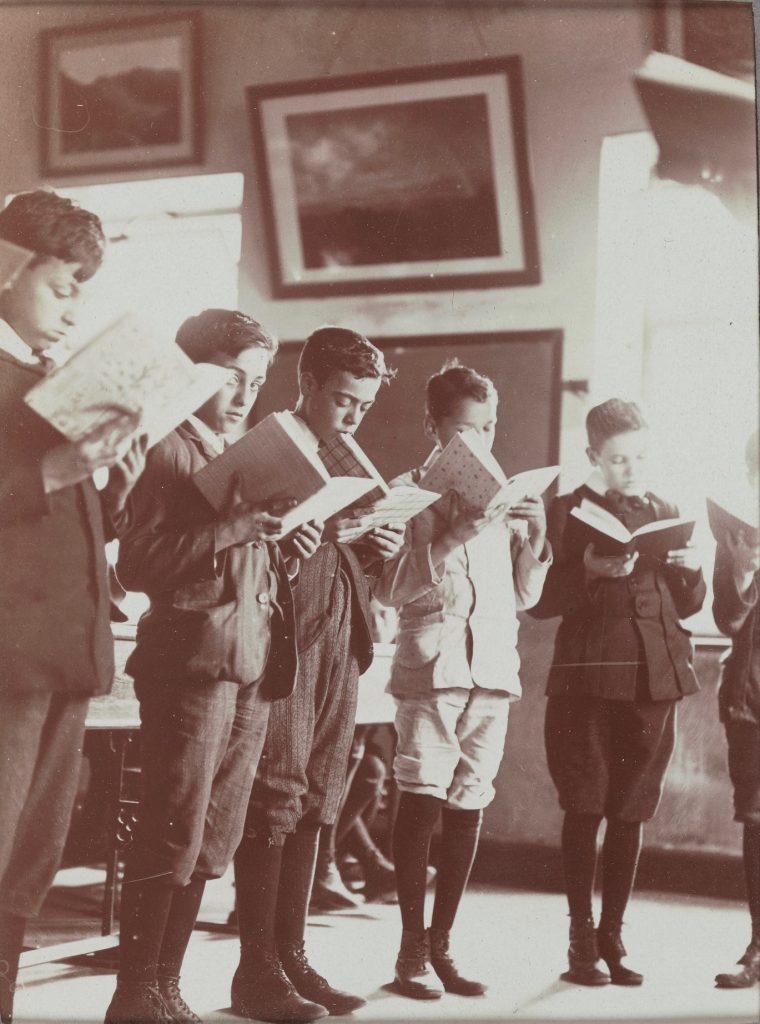
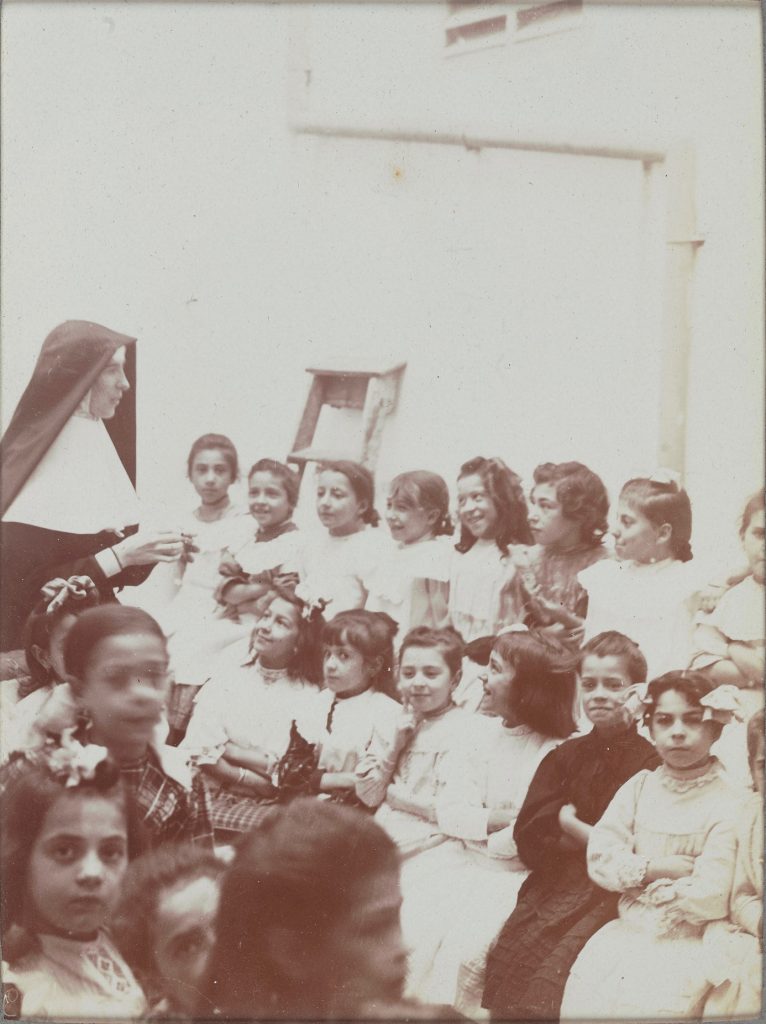
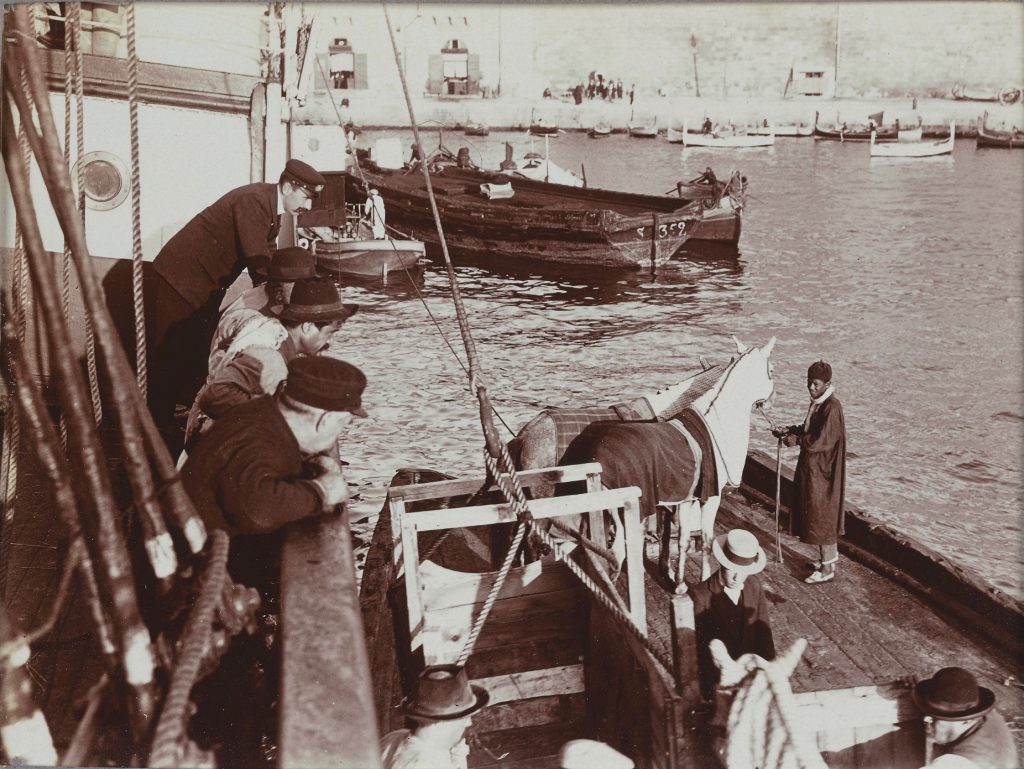
Finally, the third floor was dedicated to India. Fisher travelled extensively in India gathering a significant number of images in an attempt to depict the many different aspects of the country. The type of images requested by Mackinder to Fisher in India had to show the stability and order of the colonial society. It was important to illustrate to British pupils the Empire’s most valuable possessions and the achievements accomplished by British in the Indian subcontinent. Fisher documented the various forms of cults in India, ancient buildings, princes and rulers from different Indian states, railways, engineering infrastructures, and scenes depicting the development of the colonial economy to demonstrate the good functioning of the Empire and the subservience of its subjects.
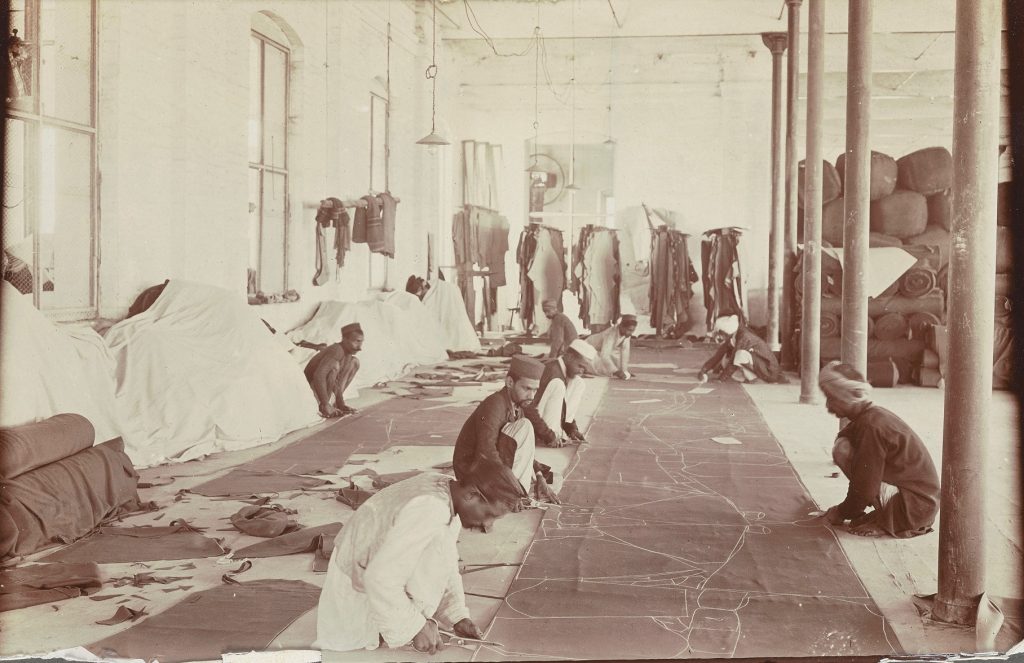
The Fisher Photograph Collection is a precious record of the diverse peoples and geography of the British Empire at the beginning of the twentieth century. The exhibition provided the opportunity to foster discussion on the use of visual material in education during the British colonial-era and to further debate on the role of photography in colonialism and in the politics involved in visual knowledge production.

